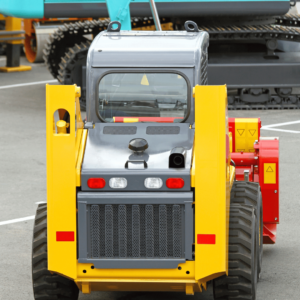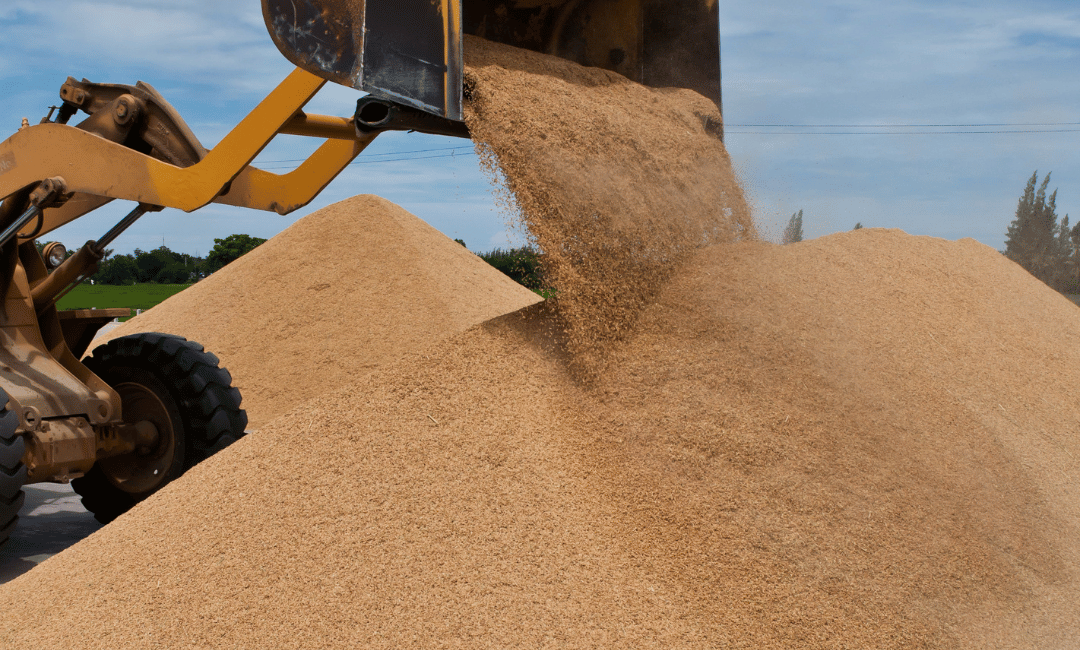Looking to grasp the opportunities for your construction projects completely? Skid steer loaders are the adaptable powerhouses able to change your workflow. These small but mighty instruments are the Swiss Army knives of building tools, capable of astonishingly fast completion of a great range of tasks. Skid steer loaders have become indispensable on modern building projects from excavation and material handling to snow removal and landscaping. Knowing the several uses of skid steer loaders will help you, regardless of experience level with construction tools, significantly affect the performance of your project. With stated running capacities between 1,250 and 4,200 pounds and over 100 alternative attachments, these machines offer unmatched flexibility. All ready to find out how skid steer loaders could enhance your building process? Let us consider 10 essential purposes for which any building project requires these tools.

Key Takeaways:
- Excellent lift capacity ranging from 1,250 to 4,000 pounds qualifies them for both small- and large-scale tasks.
- Found in both vertical and radial lift configurations to meet various job site needs.
- Compact size allows for exceptional agility in confined areas, therefore perfect for smaller building projects; compatible with over 100
- various attachments, transforming one machine into a multifarious workhorse.
- Comparatively to specialized equipment, this reasonably priced alternative provides a smaller initial investment and maintenance expenses.
What Makes Skid Steer Loaders Essential in Construction
Skid steer loaders have evolved into necessary workhorses that constantly show their value on job sites of all kinds in the fast-paced building sector of today. These little but mighty tools have transformed the way that building projects are completed.
adaptability via attachments
Skid steer loaders’ actual power comes from their incredible versatility. These machines can convert from excavators to material handlers in minutes with more than 100 different attachments—from buckets and augers to snow plows and mulchers. This adaptability saves building sites space and money by removing the need for several specialist machinery.
Small Compact Size, Maximum Maneuverability
Skid steer loaders shine in confined areas unlike more big building tools. Their small frame and zero-turn radius enable them to work in limited regions where conventional machinery cannot reach and negotiate small paths. This makes them especially worthwhile for rehabilitation projects and urban building initiatives.
Economical Operations
In building activities, skid steer loaders provide major financial savings. For contractors, their rather modest purchase price, simple maintenance requirements, and fuel economy make them a wise choice. Furthermore lowering total equipment cost and running expenses is the capacity to do several tasks with one machine.
Dependable Performance Under Many Contexts
Skid steer loaders provide constant performance over many weather conditions and terrain kinds, whether it’s moving ground, removing snow, or delivering goods. Their strong hydraulic systems and solid design guarantee consistent operation all year long, hence they are a great help to building teams.
Improved Efficiency and Safety
Modern skid steer loaders include sophisticated technologies meant to increase production and safety. While keeping great job site efficiency, improved visibility, ergonomic controls, and protective structures (ROPS/FOPS) guarantee operator comfort and security.
Understanding Skid Steer Loader Mechanics
Operating through a complex hydraulic and mechanical component system in perfect synchronization, a skid steer loader is Their unusual steering mechanism, which turns by sliding or dragging their wheels, gives these small powerhouses their moniker.
Basic Elements
A hydraulic pump system drives both the lift arms and the drive motors in a skid steer, hence defining its core. This system turns motor power into hydraulic pressure so the machine may move precisely and lift large loads. Positioned on either side of the cab, the raise arms offer the vertical movement required for different jobs.
Drive System
Skid steers use a hydrostatic drive mechanism unlike conventional vehicles. Every side of wheels runs on its own under separate hydraulic motor control. The machine moves in the distinctive skidding manner these machines are renowned for when the wheels on one side move quicker than the other.
Control Interface
Dual control levers or joysticks on modern skid steers allow operators exact control over movement and attachments. Usually managing the drive system, the left control controls the lift arms and attachment mechanisms; the right control handles the opposite. Quick response times and flawless operation are made possible by this easy configuration.
Attachment Mechanism
A quick-attach plate on the loader’s front allows easy switching between several attachments. This technique is flexible for many building jobs since it connects the attachment to the hydraulic system of the machine using hydraulic quick couplers.
Excavation and Earthmoving Applications
Skid steer loaders are vital for all kinds of building projects since they shine in excavation and earthmoving jobs. Their strong hydraulic systems and small form help them to effectively manage several digging and material moving activities.
Digging and Trenching
These flexible tools can very precisely dig trenches, foundations, and holes. They can readily move in confined areas where more general equipment cannot reach by using specialist bucket attachments. Excellent view of the work area by the operator guarantees correct depth control and clean trench walls.
Site Preparation
Skid steers are quite helpful for building sites preparation. They can properly level the ground, clean trash, and remove top soil. Their zero-turn radius lets them operate around current utilities and buildings without damaging anything.
Material Transport
Skid steers shine across job sites in transporting soil and building materials. Depending on their size classification, these machines can handle loads up to 4,200 pounds whether it is for moving excavated material, gravel transportation, or dirt piles relocation.
Leveling and grading
Skid steers make quite good grading tools with the correct accessories. For foundation, driveway, or landscaping jobs, they can produce level, smooth surfaces. The exact controls of the machine let operators regularly reach the intended grade.
Excavation from a swimming pool
One particular use where skid steers shine is swimming pool excavation. Their small form lets them dig from the inside out, producing exact pool forms and preserving stability on sloping ground. This method is especially helpful for restricted area residential pool installations.
Transportation and Material Handlers
Moving and distributing goods throughout building sites is when skid steer loaders shine most remarkably in efficiency. Their small footprint and great mobility make them ideal for negotiating confined areas while toting bulky goods.
Versatile Material Transport
Standard buckets allow these strong vehicles to readily move building supplies including sand, gravel, and concrete. Pallet forks attached enable palletized goods, lumber, and heavy equipment part movement across the site to be fluidly.
Advantages of Load capacity
Depending on the model size, modern skid steers can manage amazing weights between 1,500 and 4,000 pounds. Their low center of gravity guarantees great stability while carrying objects, therefore lowering the risk of tipping even with large loads.
Quick Material Transfer
In minutes, the quick-attach system lets operators move between several material handling attachments. Skid steers keep high output all through the workday whether one uses specialist attachments for certain items or buckets for big goods.
Limited Space Navigation
Their zero-turn radius allows for exact navigation in confined spaces where bigger equipment cannot enter. For indoor material handling chores and transferring supplies across small paths between buildings, they are therefore quite useful.
Grading and Site Preparation
Skid steer loaders excel in precision grading results and cleaning building sites. Their diminutive stature and mobility fit rather nicely for both rough and final grading assignments.
Grading Roughly
Skid steers, attached with a bucket or blade, efficiently level uneven terrain and remove superfluous soil. Their precise controls allow operators to generate the necessary slope and grade with minimal passes, therefore saving time and fuel.
Superior Grade
For finishing work, skid steers with grading accessories like laser-guided boxes or slope boards offer remarkable accuracy. These accessories allow the exact measurements needed for foundations, driveways, or landscaping.
Site Renovation
Before grading commences, skid steers can sweep the area of garbage, gravel, and vegetation. They rapidly complete site preparation tasks that would often require for multiple equipment using specialized attachments such as brush cutters or root grabs.
Management of soil
These adaptable equipment excel in soil compaction and distribution. Connected with roller attachments, compact the ground to offer a strong platform for constructing; they can also equally distribute dirt backfill trenches.
Snow Elimination and Seasonal Uses
Since they are effective snow-clearing tools, skid steer loaders are perfect for seasonal work and winter property maintenance.
Efficient Removing of Snow
Skid steers’ tiny size and great mobility help them to shine in clearing snow from limited areas such driveways, parking lots, and paths. Snow pushers or blades allow these devices to quickly move a lot of snow without upsetting the underlying surface.
Versatile Winter Accessories
Changing between many attachments tailored for winter helps the skid steer run better. While snow blowers help to handle big snowdrifts, salt spreaders provide efficient ice control. Effective and fast snow removal and relocation made possible by high capacity snow buckets
All-year adaptability
Still valuable all year round, outside of winter tasks are skid steers. In spring they assist with flood prevention and drainage repairs. Seasonal contractors would be advised to buy the same machine since it can handle landscaping tasks in summer and fall.
Activities in Demolition and Hygiene
Since they offer unmatched mobility in small locations where larger machines cannot operate as expected, skid steer loaders are ideal for demolition activities. Their robust hydraulic systems and tiny scale fit exactly for selective demolition projects.
Managing Systems
Using specialized attachments such hydraulic breakers and demolition grapples, skid steers may efficiently remove concrete walls, pavements, and other projects. Their precise control allows operators to destroy specific sections without compromising nearby buildings.
Controlling Debris
These adaptable instruments handle post-demolition cleanup with ease. Bucket attachments let them quickly gather and relocate waste to disposal locations. Their 360 degree turning ability on the spot helps them to be rather successful at gathering scattered objects.
Category of Materials
Skid steers help to separate metal, concrete, and wood forms of demolition waste using sorting grips. This capacity determines both recycling efforts and suitable rubbish disposal; so, the cleanup process is more reasonably priced and ecologically friendly.
Choosing Appropriate Skid Steer Size
Selecting the right size skid steer loader can help to maximise efficiency and productivity on your building site. Let’s look at the key factors guiding the ideal size for your needs.
Small Frame Skid Steers
Small frame skids shine in limited areas and have rated working capacities under 1,500 pounds. Residential projects, indoor restorations, and landscape jobs where mobility is crucial will find these small tools ideal.
Skid Steers in Medium Frames
Models with medium frames—ROCs between 1,500 and 2,200 pounds—offer a good combination of power and agility. They preserve good mobility and are flexible enough for most building uses. General contractors and rental fleets like these machines most of all.
Great Frame Skid Steers
Large frame skids with ROCs of 2,200 pounds offer best power and lifting capability. Large building sites and industrial uses would find these strong machines perfect since they easily handle tough jobs and big materials.
Think through your project requirements.
While selecting a size, consider:
Available points of access and workspace
Typical loads you will be managing
– Between job sites, transportation needs
– Main uses and attachments required
– Operating expenses and financial limitations
In summary
Offering unparalleled flexibility and efficiency across many uses, skid steer loaders have really transformed the building sector. On job sites all around, these small powerhouses—from snow removal and landscaping to excavation and material handling—keep proving their value. Understanding and using these ten basic applications will help you to optimize the capabilities of your skid steer loader and greatly increase the production of your project. Recall that choosing the appropriate attachments and keeping appropriate running tactics for any given activity will determine success. Whether you are handling minor projects or a sizable building site, a skid steer loader is a great purchase that will change with your demands. Investigating these adaptable uses and learning how a skid steer loader could change your workflow will help you to maximize your building operations. Your tasks merit the effectiveness and adaptability only these amazing machines can provide.





